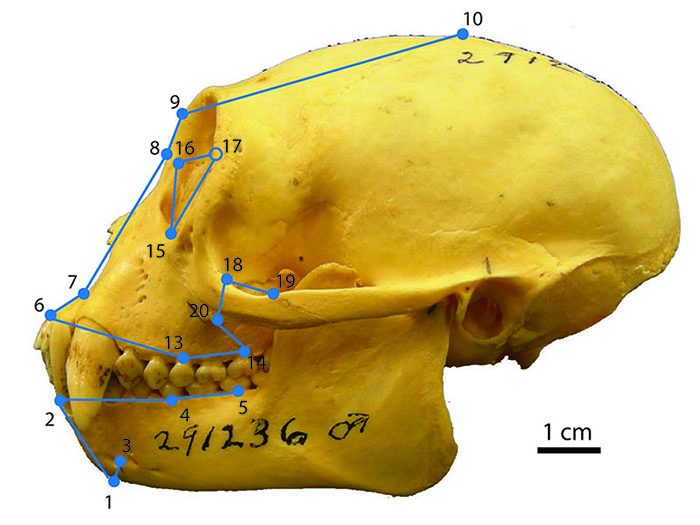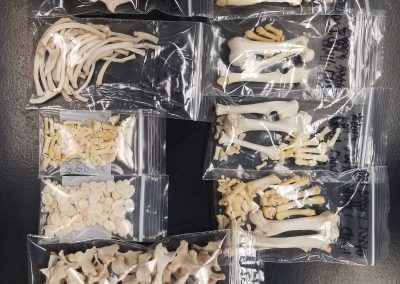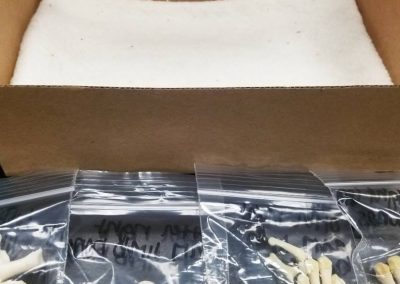The most recent specimen cleaned in the Terhune lab’s dermestid colony was an adult North American River Otter or Lontra canadensis that was killed by a local dog and donated to the Terhune lab. While the otter’s cranium was broken and stored in formalin for later study, the body was disarticulated and cleaned by our dermestid colony and the skeleton added to our osteological collection.
North American river otters are native to freshwater river, coastal marine habitats and delta areas of the United States, Canada, and Mexico in areas of the Rio Grande and the Colorado river (NatureServe, 2008). They can be found in estuaries, marshes, swamps, lakes, and rivers in a variety temperatures, latitudes, and elevations. They are apparently sensitive to pollution, and are often no longer found in polluted areas.
Lontra canadensis are not fossorial or adapted to burrowing underground, however they build dens in other pre-existing burrows and natural hallows within the ground, trees, or riverbanks. “Dens have underwater entrances and a tunnel leading to a nest chamber that is lined with leaves, grass, moss, bark, and hair,” (ADW; Ellis, E. 2003).
To learn more about the North American river otter visit the Animal Diversity Webpage here.


